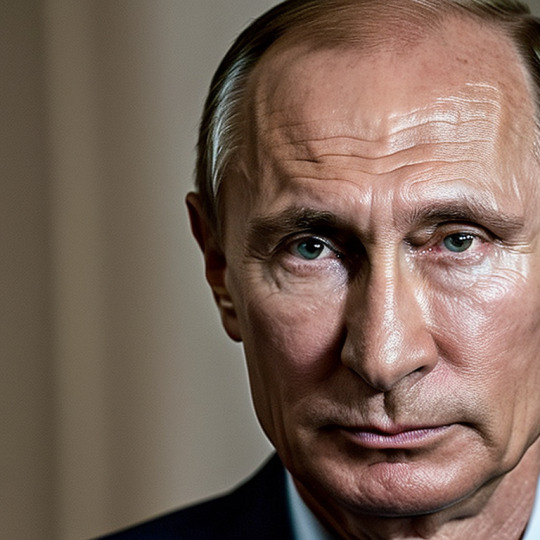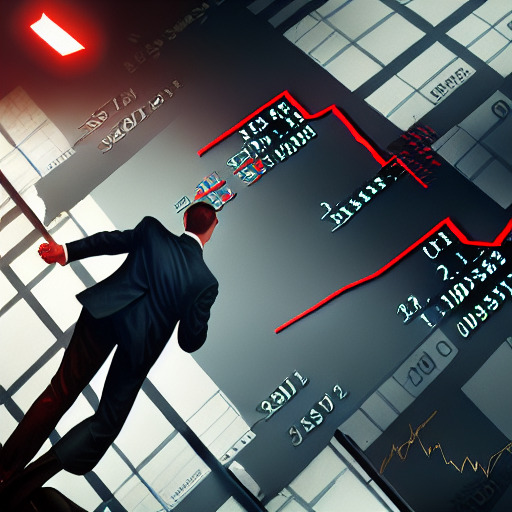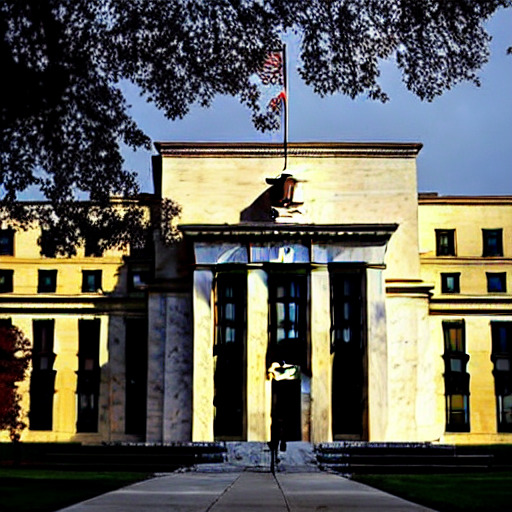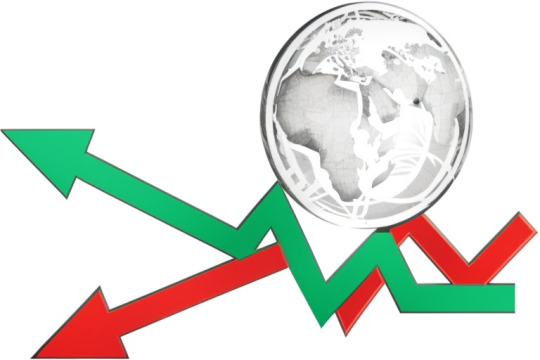Text
Russian economy

In recent years, the Russian economy has been under a global microscope, facing the unforgiving scrutiny of economists and political analysts alike. On one side, there is an image of robust economic growth and independence. On the other, a candid narrative of an economy facing strain under political tensions and international sanctions. This economic dichotomy presents two primary dimensions worth deliberating upon: Russia's perceived economic resilience in the face of international sanctions, and the potential underlying vulnerabilities of its economy.
Russia's Economic Resilience Amid Sanctions
According to the Russian Ministry of Economic Development, Russia's economy has been showing signs of steady growth. Despite the mounting international pressure, particularly from Western nations, the projected GDP growth for the current year is higher than the previously forecasted 1.2%. The bullish trends and the recovery phase depict a story of economic resilience that has caught the attention of international observers.
Russia's independent economic policy and actions, particularly towards Western sanctions, have played a pivotal role in this narrative. A crucial component of this strategy involves strengthening economic ties with China, as evident from the recent Russian Economic Forum. This forum saw extensive discussions on the sanctions levied by President Biden on North Korea, Russia's retaliation, and means to ensure Russia's economic sovereignty.
Additionally, Russia has been focusing on diversifying its markets, seeking alternative trading partners and lessening dependency on the U.S. The efforts towards fortifying its economic independence involve developing the alternative arms market, where it has already initiated cooperation with China.
Unmasking the Underlying Vulnerabilities
However, the proclaimed robustness of the Russian economy has its critics, with several economists pointing towards potential vulnerabilities beneath the surface. Alexandra Prokopenko, an esteemed researcher at the Carnegie Center for Russian Eurasia and a former adviser to the Russian Central Bank, argues that the country's economy is being subtly undermined by the ongoing conflict with Ukraine.
According to Prokopenko, the enthusiastic portrayal of Russia's economy by President Putin during the St. Petersburg International Economic Forum masks signs of economic overheating. "Demand is growing, but domestic supply of goods and services is not keeping up," she argues, pointing to rising inflation as a consequence.
While Putin has confidently claimed that the country's military spending has led to only a minor budget deficit, Prokopenko suggests otherwise. According to her analysis, Russia has already run a budget deficit of 3.4 trillion rubles, approximately $40 billion, this year alone.
Moreover, Russia's low unemployment rate, which has hit a record low of 3.3% in April, is not an accurate indicator of economic health. Prokopenko posits that this might be due to a massive exodus of workers leaving the country due to the ongoing crisis in Ukraine, leading to an all-time low worker availability.
Conclusion
The Russian economy, like a Shakespearian drama, unravels in layers of complex narratives and counter-narratives. While Russia presents an image of strong economic growth and independence, critics argue that beneath the surface, the economy is creaking under international pressure and internal vulnerabilities. As we continue to observe these unfolding dynamics, the real story of Russia's economic resilience, or the lack thereof, will gradually come to light.
#RussianEconomy#EconomicSanctions#PutinPolicies#GDPgrowth#InternationalRelations#ChinaRussiaRelations#UkraineConflict#EconomicResilience#InflationConcerns#GlobalEconomy
0 notes
Text
monetary policy change

In the mesmerizing opera of the global economy, actors come and go, playing their parts with precision and sending ripples across the world stage. Recently, international oil prices fell, the People's Bank of China (PBOC) announced a smaller-than-expected interest rate cut, and South Korea's producer price index (PPI) declined. Let's take a closer look.
The slippery slope of oil prices and the PBOC's unexpected reversal
International oil prices have recently been on a downward spiral that is rooted not only in the interplay of supply and demand, but also in the overall monetary policy and economic environment. As the center of global economic activity, China has a significant impact on these oil price movements.
On June 20, 2023, the PBOC announced an interest rate cut of 0.25%, which fell well short of market forecasts. The announcement reverberated with disappointment across exchanges and sent global markets into a state of anxiety. Concerns about a potential slowdown in the powerful Chinese economy began to rise, fanning the flames of anxiety about a possible global recession.
But it's important to remember that the Chinese economy, a bastion of resilience, has weathered many storms. The country's economic growth story is filled with examples of recovering from crises and continuing its expansionary journey. This economic downturn may just be another moment in that powerful growth story.
Emphasize global response and stability
The tremors of volatile oil prices and economic uncertainty extend far beyond China. Developed countries, including the U.S., are already strategizing to offset this instability. Actions range from conserving energy and developing alternative energy sources to fostering new industrial sectors that can spur economic growth. These initiatives are expected to play an important role in strengthening international economic stability.
The current decline in international oil prices may be a temporary phase, and it is important to enhance the resilience of the global economy through various countermeasures. The world is watching with bated breath the transformation of China's economy and the rise and fall of oil prices.
Meanwhile, the Bank of Korea said that producer prices have been falling for two consecutive months due to lower oil prices. The producer price index stood at 120.14 in May, down 0.3% from the previous month (120.5).
This decrease is worth noting considering that the index was on an upward trajectory from January through March. Compared to May 2022, it was up 0.6%. The drop in oil prices had a significant impact on certain commodities, with coal and petroleum products down 6.3% and chemicals down 1.1%.
Conversely, some commodities saw gains, with livestock up 3.1%, seafood up 1.2%, and agricultural products up 0.3%.
#GlobalEconomy#OilPriceFluctuation#InterestRateCut#PeoplesBankOfChina#EconomicSlowdown#ProducerPriceIndex#AlternativeEnergySources#EconomicResilience#GlobalRecessionConcerns#MarketExpectations
0 notes
Text
Korea Venture Investment and France Agreement

In the dynamic world of venture capital (VC) and startup ecosystems, successful collaborations can be game-changers for economic growth and innovation. Such is the case with the recent collaboration between Korea Venture Investment, the pinnacle of the Korean capital market, and a leading French venture capital firm. The partnership, which aims to amplify the startup ecosystem while providing domestic startups with avenues for international expansion, is indeed a promising move towards strengthening the global entrepreneurial ecosystem.
Global collaboration: a bridge between two ecosystems
The power of global collaboration in the startup environment should not be underestimated. The recent collaboration between Korean and French venture capitalists is a testament to this fact. By establishing a collaborative relationship, the partnership opens up a two-way channel for knowledge sharing, cross-border investment, and business development.
In particular, the joint venture will connect VC global funds from both countries to simultaneously promote new business entry and upgrade existing entrepreneurial infrastructure. These efforts will also encourage international marketing strategies, which are essential for startups aiming for international growth.
This collaboration has great potential to strengthen the long-standing exchange and cooperation between the Korean and French startup ecosystems. As Korea Venture Investment accelerates its efforts to support Korean startups to go abroad, the domestic startup ecosystem will also evolve and flourish.
ESG Investment: A catalyst for the venture capital ecosystem
Another important aspect of the joint venture is the mutual recognition of environmental, social, and governance (ESG) factors in the entire venture capital ecosystem. The agreement has the potential to influence Europe's approach to investor recruitment and investment company selection. The cross-border exchange of ESG investment experience could be a substantial contribution to the Korean venture ecosystem in the coming years.
Yoo Woong-hwan, CEO of Korea Venture Investment, said that four out of five funds invested in Europe by foreign VC global funds are located in France. This emphasizes the important role that France currently plays within the Korean venture ecosystem.
#KoreaVentureInvestment#FrenchVC#StartupEcosystem#CrossBorderCollaboration#VentureCapital#GlobalFunds#ESGInvestment#OverseasExpansion#Innovation#SustainableVentureCapital
0 notes
Text
Global ETF
The ETF craze continues, with AUM for exchange traded funds (ETFs) across the globe reaching record highs. But what's behind this craze, and how it's impacting our economy, is something we'd like to analyze, along with some advice on how retail investors should approach ETF investing.

How ETFs have grown
Globally, total assets under management (AUM) in ETFs reached a record high of $10.32 trillion in March, representing an increase of about 0.5% year-over-year, demonstrating that even in the face of rising interest rates and stock market volatility, ETFs have become more popular. This is due to their many advantages.
First, ETFs serve as a diversification tool, allowing investors to hold a wide range of instruments, including stocks, bonds, and commodity futures contracts, in one portfolio. When volatility increases in the stock market, investors are drawn to ETFs, which are portfolios of different assets rather than individual stocks. This makes them an attractive option for investors who are risk-averse and looking for stable returns.
Second, because ETFs are publicly traded, they are relatively easy to buy and sell, which means they can react quickly to market volatility, and many investors are attracted to the ability to cash in their gains immediately.
Where the ETF craze is headed
So let's take a look at where this ETF craze is headed, and what we can expect to see as a result.
Experts believe that the ETF market will continue to grow, but at the same time, it's important to note the risks that can come with an overheated market, especially as ETFs come to control large amounts of assets, which can affect the stability of the market.
Investors should fully understand the unique characteristics and risks associated with investing in ETFs. For example, while ETFs offer a diversified portfolio of assets, they also increase asset-specific risk, which requires an appropriate risk management strategy. It is also important to understand the difference between where an ETF is listed and the actual value of the assets it invests in.
#ETF#Investment Strategies#investmenttrends#financialinstruments#Risk Management#Wealth Management#Economic Trends#Investment Advisory#Portfolio Management#Finance
0 notes
Text
Google Advertising Under Fire

Origins and background
Internet giant Google has recently come under increased scrutiny from the United States and the European Union (EU) for its dominant position in the advertising industry. As the world has gone digital, Google has grown to control a significant portion of the online advertising market. This has raised concerns about potential monopolistic practices, with critics arguing that Google is unfairly restricting competition in the industry.
The pressure on Google's digital advertising business is coming from around the world. In January, the U.S. Department of Justice and eight states filed an antitrust lawsuit against Google, and the U.K. is reportedly conducting a similar investigation. At the center of these actions is Google's Ad Exchange, or AdX, a platform that controls much of the online advertising process. In response, Google has denied the allegations, arguing that its advertising tools help businesses of all sizes effectively reach new customers.
Specifics of the case and potential outcomes
On June 14, the European Commission released a preliminary report on Google, alleging that the tech giant violated competition law in its digital advertising business. Specifically, the Commission accused Google of favoring its own online display advertising technology to the detriment of competitors, advertisers, and online publishers. If further investigation confirms these allegations, these practices would be considered illegal.
The EU Commission has also raised the possibility of a sale of the company's advertising division. EU Competition Commissioner Margrethe Vestager expressed a preliminary view that Google may have to sell some of its services to address competition concerns.
In response, the Associated Press reported that this is the first time the EU has mentioned selling off a significant portion of a business due to antitrust violations, which shows the seriousness of the allegations against Google and the potential ramifications for the tech industry.
In response to the pressure, Google considered spinning off its advertising business into a subsidiary of its parent company, Alphabet. However, this proposal was rejected by the US Department of Justice, which decided to proceed with the lawsuit.
With the matter unresolved, the future of Google's ad business remains uncertain. The global crackdown on big tech shows no signs of abating, and governments around the world are working to regulate monopolistic practices within the tech industry. Google's case could set a precedent for how digital monopolies are handled in the future, and could reshape the landscape of the tech industry.
#Google#EURegulations#Antitrust#OnlineAdvertising#DigitalMonopoly#USDepartmentOfJustice#EUCommission#BigTech#TechIndustry#AdExchange
0 notes
Text
View child information

Amazon's investment in child privacy: $25 million.
Amazon, the world's largest e-commerce platform, has agreed to pay $25 million to settle allegations that it collected and stored children's sensitive information in violation of the Children's Online Privacy Protection Act. The decision is part of a push for increased regulation of these platforms to better protect young users.
Personal information collected from children during interactions with Alexa, Amazon's voice-activated virtual assistant, is at the center of the case. Regulators pointed out that Amazon kept Alexa voice recordings of young users indefinitely and used the data for business purposes, such as training algorithms to understand children.
This violated the COPPA law, which requires companies to obtain parental consent before collecting personal information from children under 13, and to allow parents to delete their children's data. Furthermore, Amazon was criticized for failing to completely delete Alexa's conversations with children from all of its databases when parents tried to delete their children's voice recordings.
This is a big lesson for Amazon: it sends a message that all tech companies need to take responsibility for children's privacy and be more transparent and proactive with both parents and children.
Children's privacy: a global concern
Amazon's case illustrates the growing awareness of the importance and legal obligation to protect children's privacy around the world. As technology platforms around the world collect and utilize more and more information, the Amazon case serves as a reminder that protecting children and young people online is not just about surveillance or restrictions, but about ensuring that their information, especially their personal information, is properly protected and used. The online privacy of children and young people complicates these issues of transparency and respect. However, as we see companies like Amazon acknowledging their legal responsibilities and making improvements, we can take heart from the positive message that commitment to children and young people's online safety is strengthening globally. These positive changes are important steps in creating a transparent and safe digital environment for future generations.Of course, there is still a lot of work to be done. But if we all become more aware, more involved, and more committed to keeping children and young people safe online, we can give them a brighter digital future. In closing, I would like to emphasize that we must all work together to ensure that the next generation of digital natives grow up in a safe and free internet environment.
#OnlineSafety#DigitalCitizenship#ChildProtection#DataPrivacy#InternetSecurity#YouthOnline#AmazonPrivacyPolicy#COPPA#DigitalLiteracy#SafeWebforKids
0 notes
Text
Bitcoin Evangelist

In the vast ocean of cryptocurrencies, Bitcoin has been guiding the North Star since its inception. Its dominance in the crypto space continues to grow, driven by a variety of market factors and regulatory developments. One person who has been vocal about Bitcoin's resilience and growth is Michael Saylor, a well-known "Bitcoin evangelist" on Wall Street. This article will explore his predictions against the backdrop of Securities and Exchange Commission (SEC) regulations and explore Bitcoin's rise in market share.
Understanding the Bitcoin Evangelist and his predictions
Michael Saylor, the founder of MicroStrategy, is considered a "Bitcoin Evangelist. His belief in cryptocurrency has led his company to hold a significant amount (around 140,000 Bitcoin), which is indicative of his long-term bullish outlook. Recently, he made waves by predicting that Bitcoin's market share could potentially double and even reach 80% due to SEC regulations.
Saylor posits that the SEC's increased control over cryptocurrency regulation will eventually benefit Bitcoin investors. His belief stems from the understanding that Bitcoin, as the pioneer and most established cryptocurrency, is better able to weather the regulatory storm. He suggests that if the SEC focuses on other tokens, the market could be reorganized around Bitcoin, strengthening its dominance.
The double-edged sword of SEC regulation
Saylor's predictions don't exist in a vacuum, however. They've sparked mixed reactions in the crypto space. Some experts agree with Saylor, arguing that regulation could unintentionally strengthen Bitcoin's position. They base this on the aftermath of recent SEC lawsuits against crypto exchanges like Binance and Coinbase for securities law violations. When the SEC deemed several altcoins, including Binance Coin, Polygon, Ada, Solana, and Sandbox, to be "securities," their value plummeted, increasing bitcoin's market share.
Conversely, critics warn that SEC regulations could have a negative impact on Bitcoin. They believe that continued uncertainty about these regulations could create fear in investors, causing market turbulence that could hit Bitcoin hard.
Despite these differing opinions, one aspect remains unchallenged. That is Bitcoin's resilience. Throughout the regulatory onslaught and market fluctuations, it has shown tenacity by holding on to the $25,000 mark.
#Bitcoin#CryptoRegulation#SECRules#BitcoinDominance#CryptoMarket#MichaelSaylor#CryptoNews#BitcoinEvangelist#CryptoInvesting#DigitalCurrency
0 notes
Text
VICA's Humanitarian Bridge

Vika Foundation Announces Global Support for Victims in India
The Vika Foundation, known for its integration of blockchain technology, has launched a series of donations to continue its humanitarian support for countries in crisis.
According to the foundation, the donations were made through Save the Children to provide practical help to India, which recently suffered a devastating train accident that killed 288 people, and Turkey and Syria, where a 7.8-magnitude earthquake left many dead and injured.
The donation will be channeled through agencies and organizations working with the victims in India and Turkey.
The Vika Foundation has a clear mission and is focused on its core values, and the Foundation's ERC20-based Vika token has been listed on several international exchanges to spread its name and influence positive global change and create a virtuous cycle of giving. We are in the process of listing on domestic exchanges, which is expected to increase our visibility in the country as well.
It is also focusing on making arbitrage a reality through its arbitrage solution, ViBOT, and an automated trading system that allows users to trade crypto assets through automation, simplifying the trading process and increasing profits.
"Going forward, we will continue to demonstrate the power and potential of blockchain technology not only in the financial sector, but also as a powerful tool for global humanitarian assistance," concluded the Baica Foundation.
#VICA Foundation#support#humanitarian#indian train accident#turkey earthquake#Natural Disasters#corporate sponsorship#blockchain company#cryptocurrency#coin
0 notes
Text
China Is it okay the way it is?

Understanding China's economic slowdown: Analyzing key indicators
When we delve into the global economic landscape, the state of the Chinese economy takes on a certain centrality due to its role as one of the largest economies in the world. Recently, a series of financial indicators have raised concerns about the health of the economic giant.
The Consumer Price Index (CPI), a key indicator that measures inflation levels, fell to a lower-than-expected 1.3% in May. While this drop is a sign of slowing inflation growth, it also points to a decline in consumer demand, which is an ominous sign for economic growth.
Another area of concern is the money supply and lending situation. Data showed that the shortfall in new yuan loans in May was 1.36 trillion yuan, far less than the 1.6 trillion yuan expected. A decline in lending can have a significant impact on the overall liquidity of the economy, restricting the flow of funds that often fuel growth. Moreover, growth in the broader money supply (M2) slowed, emphasizing the tight liquidity situation.
The culmination of these factors - lower consumer demand, reduced lending, and slower money supply growth - shows the economy grappling with challenges. As China navigates the complexities of trade tensions with the United States and the continuing aftermath of the COVID-19 pandemic, these indicators raise questions about the country's economic resilience.
China's central bank responds: deciphering policy changes
In response to China's economic slowdown, the People's Bank of China (PBoC) has jumped into action in what could be the beginning of a strong policy response.
The PBoC recently cut its seven-day repo rate by 0.01 percentage point. While modest, the rate cut, the first in 10 months, could be a precursor to a more comprehensive monetary easing policy.
With analysts closely watching the central bank's moves, many are predicting a series of measures designed to revitalize the stagnant economy. These could include lowering reserve requirements for commercial banks, easing real estate policies, and increasing fiscal spending.
The combination of these actions could boost liquidity, spur consumption, and encourage investment, thereby driving economic growth. Forecasts from Goldman Sachs and Morgan Stanley further support this possibility, suggesting that the PBoC could lower the reserve requirement ratio in the third quarter and cut more aggressively in the fourth quarter.
These changes underscore the willingness of central banks to address the current economic downturn, but the road to recovery could be long and winding, as the effectiveness of these measures will depend on global economic trends and the response of the private sector.
These two dimensions - worrisome economic indicators and the central bank's response - provide important insights into China's economic trajectory. As we move forward, the interplay between these factors will largely shape the course of the Chinese economy.
#China#e#headquarters#C#monetary easing#YuanTheory7#InterestRateCuts#InflationControl#GlobalTradeTension#COVID19Impact
0 notes
Text
A deep dive into the U.S. stock market rally

The high winds in the U.S. stock market are blowing harder, sweeping away investor confidence and optimism. The S&P 500 Index is redefining 52-week highs with dogged tenacity. Wall Street's growing enthusiasm finds reflection in encouraging forecasts from industry giants. Bank of America predicts the market rally will continue through the end of the year, with the S&P 500 rising from 4,900 today to a whopping 5,000 by next summer.
Climbing the wall of worry
Stephen Schutmeier, a seasoned technical analyst at Bank of America, notes an interesting "rare signal" from the S&P 500 chart. The index has surpassed its 52-week high in an impressive 525 days since January 2022, a rare occurrence that has historically taken more than 300 days to break. In a reassuring pattern, the S&P 500 has posted double-digit gains in at least 16 of the last 24 times such an event has occurred.
What can investors take away from this? Despite the whirlwind of fear and uncertainty engulfing the market, the stock market is poised to "ride the wall of worry," as Schumpeter diagnosed. This pattern has previously unfolded in 2012, 2016, 2019, and 2020, fueling optimism about the future.
Wider participation, brighter outlook
Global investment bank Oppenheimer added another feather to the cap of positive market sentiment. Ari Wald, chief strategist at Oppenheimer, hailed the participation of small-cap stocks as well as large tech companies in the current market rally as a "very positive sign". This broadened base is indicative of a healthier, more inclusive rally.
Optimistic forecasts have made the trade even sweeter, with the S&P 500 expected to surge to 4,600 this year. Despite an expected pullback to year-end closing at 4,400, that would represent a solid victory lap for the index.
Indeed, the S&P 500 surged 0.69% on the day to close at 4,369.01, a new 52-week high. While we proceed with cautious optimism, the prevailing market sentiment is clear. The rally shows no signs of slowing, and this is a fascinating and dynamic time to observe and participate in the U.S. equity markets. The stage is set for an exciting year-end, and all eyes are on the wall of worry as the market continues its upward trajectory.
#USStockMarket#WallStreet#MarketRally#BankOfAmerica#S&P500#StockMarketAnalysis#InvestmentTrends#MarketOptimism#FinancialForecast#InvestmentStrategy
0 notes
Text
CPI

May's CPI increase marks a crossroads for the economy
The latest US CPI data for May showed a 0.6% month-on-month increase and a 5% year-on-year increase. In this situation, the US Federal Reserve (FOMC) will be watching the May CPI before deciding whether to raise the Fed Funds rate. The uptick in May's CPI has spurred the FOMC to discuss whether to raise rates.
However, the response is at a crossroads. While the FOMC is considering a rate hike due to rising inflation concerns, there is also a risk that a rate hike could cause a recession. Therefore, the FOMC needs to be very careful about how it responds to the May CPI increase.
The rise in May CPI puts the US economy at a crossroads. The FOMC is considering whether to raise interest rates, but there is a risk that a rate hike could lead to a recession. As a result, future responses to the US economy should be considered more carefully.
Inflationary Concerns and Countermeasures
Meanwhile, the rise in CPI in May has raised concerns about inflation in the US. If inflation continues, it could have a serious impact on the US economy, and countermeasures are needed.
A possible response to inflation could be to raise interest rates, but this could lead to a recession. Therefore, the response should be considered very carefully.
The U.S. government has recently been actively promoting preemptive price adjustments as a response to inflation. The U.S. Chamber of Commerce has advocated raising product prices to combat inflation.
There is also a growing focus on the unemployment rate, which is the leading economic indicator in the United States. Some argue that lowering the unemployment rate is a good way to fight inflation.
However, inflation is not a short-term problem, and long-term solutions are also needed. The US government is trying to do this by reforming the structure of the economy.
In this way, the U.S. government is trying to fight inflation. However, it is important to keep in mind that inflationary measures should be considered very carefully and that long-term solutions are also needed.
#hashtags:#stockmarket#investing#economy#research#finance#technology#business#marketanalysis#inflation#federalreserve
0 notes
Text
Google sued for antitrust

Google's Antitrust Behavior
Google has a dominant position in the search market, which has been criticized for creating an unfair competitive environment. In response, Google emphasizes improvements and transparency in its search results, but the EU claims that these improvements are lacking.
Google has also been accused of violating antitrust laws by doing things like controlling the app store on its Android operating system. This behavior is believed to reduce app developer choice and competitiveness.
European companies are concerned
Google's antitrust behavior has a significant impact on European businesses. As Google maintains its monopoly position, businesses lose competitiveness and consumers are faced with less diverse and innovative products.
In the wake of this lawsuit, European companies are concerned about Google's behavior. For example, concerns about Google's dominance of the advertising market could penalize advertisers, and concerns about Google's manipulation of search results could force small businesses to compete unfairly.
#1.#Interest rate cuts#2. banking crisis#3. credit crisis#4. antitrust#5. google#6. microsoft#7. apple#8. advertising#9. regulation#10.
0 notes
Text
The Pulse of Wall Street

In a dynamic financial landscape, the New York Stock Exchange (NYSE) is a behemoth, influencing not only the U.S. economy but also global markets. Recently, the NYSE has witnessed a surge in activity and intrigue, inviting us to explore the trends driving the process and how they affect us. This article will focus on the NYSE's performance and the cascading effects on the global economy, especially the continued upward trend and the looming shadow of potential interest rate hikes.
Wall Street Bulls: NYSE's Uptrend
The NYSE is currently riding the wave of a sustained uptrend. A strong indicator of the US economic recovery, this trend reflects the growth and profitability of NYSE-listed companies, especially tech giants like Tesla.
Tesla's market momentum is more than just a catalyst; it's a sign of the broader potential of the tech industry and growing investor confidence in the sector. On news that General Motors (GM) drivers will soon be able to use Tesla's superchargers, Tesla's stock alone rose more than 4%.
The S&P 500, the largest measure of the market, also recently peaked for the first time since August of the previous year, signaling an unabated bull market. The NYSE's continued gains were mirrored by the Nasdaq Composite, which rose 0.16%, marking its seventh straight week of gains.
The Fed's balancing act: rate hike fears
While the NYSE's upward trajectory bodes well for investors, it is not without clouds of uncertainty, the most prominent of which is concern over the possibility of a rate hike by the US Federal Reserve. This potential development could impact investment strategies and lead to greater demand for safer assets.
Despite these concerns, the NYSE continued its strong performance, further emphasizing the resilience and adaptability of the market. Major banks are expecting the Fed to stop raising rates this month, but whispers of a 25 basis point hike continue.
Interestingly, some experts speculate that the Fed could add another layer of intrigue to the equation by signaling an additional rate hike through its decision announcement and economic outlook summary. If these predictions materialize, it will be important for investors to strategically navigate this environment while balancing risk and reward.
What does this mean for the global economy?
In the grand scheme of global finance, the ripple effects of Wall Street are far-reaching. Countries that trade heavily with the U.S., such as South Korea, will invariably feel the impact of these market changes. A thriving NYSE can positively impact these economies and amplify the importance of following NYSE trends.
In conclusion, the current dynamics of the NYSE tell a compelling story of growth, resilience, and adaptability. As investors, market analysts, and global observers, we should continue to monitor these trends and understand their broader implications to help us make informed decisions.
Don't forget to check your trusted financial news sources to stay up to date on what's happening on the NYSE, and remember that the world of finance is constantly evolving, and so should our knowledge. Keep learning and keep growing.
#WallStreetTrends#NYSEUpdates#GlobalEconomicImpact#TeslaEffect#BullRun#InterestRateHikeConcerns#FedDecisions#InvestmentStrategies#FinancialResilience#GlobalFinanceKnowledge
0 notes
Text
Anxiety over interest rate hike

There is an air of excitement as all eyes turn to the U.S. Federal Open Market Committee (FOMC) ahead of its scheduled meeting later this month. As investors and economists grapple with the possibility of further rate hikes, a critical debate is taking place within the financial sector. Today we will explore two dimensions of this fascinating discourse: the potential impact on financial markets and the broader implications for economic stability.
Financial markets: confidence and caution in balance
There is a noticeable undercurrent of expectation among investors and market participants, as many believe that the FOMC could authorize another rate hike. A clear signal comes from the US Treasury yield curve, which has flattened considerably recently, a common precursor to a potential hike. This expectation has provided a boost to the US stock market, especially financials, as traders begin to consider the impact of a rate hike.
However, the prospect of further rate hikes is a double-edged sword. On the one hand, it signals confidence in the health of the US economy, sparking optimism among market participants. On the other hand, it also raises concerns that further hikes could destabilize financial markets. The key to understanding this dual response lies in the balancing act that is monetary policy.
A rate hike would tighten financial conditions, potentially causing a slowdown in investment and consumer spending, which could lead to market declines. That's why some banks, like Citi, expect a potential 25 basis point hike, while others expect a temporary pause in rate adjustments. This complex interplay between optimism and caution is at the heart of the current financial debate.
Economic stability: balancing inflation and growth
The primary mission of the Federal Reserve, the central bank of the United States and the organization behind the FOMC, is to create economic conditions that achieve both stable prices and maximum sustainable employment - in other words, to pursue economic stability. The question is how further interest rate hikes will support this goal.
Higher interest rates typically serve to slow economic activity and thus keep inflation in check. Several members of the FOMC have advocated for this approach, arguing that it will strengthen the stability of the U.S. economy, especially given current inflationary pressures. For example, Fed Board member Christopher Wheeler has publicly supported further rate hikes as a measure to keep inflation in check.
However, rate hikes need to be carefully calibrated: overly aggressive increases could trigger a slowdown, lowering employment and stifling economic growth. This is an outcome the Fed wants to avoid, so while further rate hikes can serve as a deterrent to inflation, it is important to strike a balance to maintain economic growth.
As the world awaits the FOMC's decision, it's clear that both sides of the rate hike debate have valid arguments. If implemented, further rate hikes could act as a tool to inspire economic stability and prevent inflation. However, they could also have a negative impact on financial markets.
Whatever the outcome, it is clear that the interplay of monetary policy, market dynamics, and economic stability will continue to preoccupy financial professionals, investors, and economists in equal measure. As we prepare for the meetings on the 13th and 14th, the conversation is far from over. Only time will reveal the full impact of the Fed's monetary policy moves, and the financial world will be watching every step of the way.
#FederalReserve#FOMC#InterestRateHike#USFinancialMarket#EconomicStability#InflationControl#MonetaryPolicy#FinancialDebate#InvestorInsights#EconomicForecast
0 notes
Text
Luxury poetry with a twist

Inflationary pressures and the luxury market's response
We are witnessing an unusual trend in the global luxury goods market. Prices are rising steeply even as the industry grapples with inflationary and recessionary pressures. Recent economic assessments in South Korea suggest that luxury goods prices are approaching unprecedented highs, highlighting widespread concerns about the sustainability of the industry's growth.
The report by Weekly Seoul highlights the rising prices in the luxury market, a trend that is becoming a burden for consumers and potential luxury lovers. News Tomato echoed these sentiments, expressing concern that luxury prices have reached unaffordable levels. However, as reported by The Economist, despite the obstacles, the industry continues to introduce innovative and trendy "new products" to appeal to the evolving tastes of luxury consumers.
Interestingly, in the midst of these price and economic challenges, the pre-owned luxury market is thriving. Money Today recently provided an insight into investing in luxury bags, highlighting the growing importance of the secondhand market in the wider luxury sector.
Consumer reaction and the industry's future path
In an era of luxury goods price spikes, we can't ignore the aftermath of China's economic slowdown and the US-China trade war. They derive from products that are high-end relative to their price.
A recent McKinsey study found that spending growth among high-income consumers has turned negative for the first time in nearly two years, as reported by Yahoo Finance, showing that the wealthy are cutting back more aggressively than those with lower incomes. Pauline Brown, former president of LVMH North America, said that most brands have pushed prices to levels that are no longer sustainable, making them unaffordable for sharp buyers.
In fact, a November report from Vogue Business found that 30% of U.S. luxury shoppers are considering spending less on designer brands, with 20% switching to cheaper alternatives, and 46% saying they will wait for sales and discounts before buying their next designer brand.
LVMH, the world's largest luxury goods company, reported a modest 8% increase in U.S. sales in the first quarter. However, CFO Jean-Jacques Guiony said the increase was largely driven by Sephora sales, with the rest of the business seeing a slowdown. Going forward, he suggested that the focus should shift from price increases to actual volume growth - a challenging prospect given the shrinking financial means of aspirational shoppers.
In these turbulent times, it's worth noting that the gap between the top and bottom tiers of luxury consumers is widening. Top consumers, who account for a healthy portion of luxury sales, will continue to buy selectively, while bottom consumers will gradually withdraw from luxury purchases.
Navigating these headwinds will be a defining challenge for the luxury industry - a delicate dance between maintaining brand value and appealing to a consumer base grappling with a recession. How the industry evolves in response to these challenges will shape its trajectory over the next few years.
#LuxuryMarketSlowdown#InflationImpact#LuxuryGoodsInflation#EconomicRecession#LuxuryGoodsTrends#LuxuryIndustryInsights#SecondHandLuxuryMarket#LuxuryGoodsInvestment#LuxuryConsumerBehavior#LuxuryBrandsPricing
0 notes
Text
El Salvador Coin Mouth
El Salvador's Bitcoin legislation and motivations revealed
On June 5, 2021, El Salvador redefined monetary history by becoming the first country in the world to legislate Bitcoin, a decentralized digital currency. In a bold move, President Nayib Bukele spearheaded the installation of more than 200 Bitcoin ATMs across the country, effectively recognizing Bitcoin alongside the US dollar.
The rationale behind this groundbreaking move was El Salvador's growing disillusionment with the limitations of the US dollar, primarily its susceptibility to inflation and the high costs associated with international remittances. Bitcoin's unique properties, based on blockchain technology, provide a buffer against inflationary pressures and offer a more secure and cost-effective solution for cross-border transfers.
By legalizing Bitcoin, there are expectations that El Salvador will open the floodgates to investment and position itself at the forefront of the digital asset revolution. However, the legislation carries inherent risks that could expose the country's economy to significant fluctuations, primarily due to the unstable nature of Bitcoin.
The promise and perils of legalizing Bitcoin
El Salvador's legalization of Bitcoin puts the country in the global spotlight and sets a precedent that could encourage other countries to follow suit. Recognizing bitcoin as a legal tender could potentially boost its use in the country, bolstering businesses that deal with the cryptocurrency and spurring the installation of more bitcoin ATMs.
However, such a move would also come with a set of challenges. The price of bitcoin, which is notoriously volatile, is determined by the number of participants in the trading ecosystem. Its status as a digital asset amplifies the uncertainty associated with its valuation. As such, the risk-return tradeoff for bitcoin is significant: the potential for high returns is attractive, but it comes with equally compelling risks.
For those looking to capitalize on the new era of bitcoin in El Salvador, it is important to have a well-informed and comprehensive understanding of the pros and cons of bitcoin. The bitcoin market is highly volatile, so it's important to use good judgment when investing. It's a good idea to decide what you're comfortable with and limit your investments within those limits.
El Salvador's acceptance of Bitcoin as a legal tender could spark a wave of Bitcoin popularity. However, investors should tread this path carefully, understanding the complexities and potential risks of investing in Bitcoin. A successful investment strategy in this dynamic market requires constant monitoring and staying abreast of the latest developments in the Bitcoin world.
#BitcoinLegalTender#ElSalvadorBitcoin#CryptoRevolution#DigitalCurrency#BitcoinInvestment#BlockchainTechnology#BitcoinAdoption#FinancialInnovation#CryptoEconomy#BitcoinNews
0 notes
Text
Economic growth example for the World Bank

Deciphering growth paths in the massive, interwoven fabric of the global economy can be a daunting task. On June 8, the World Bank, one of the world's most trusted financial institutions, released a forecast that sent ripples through the financial corridors.
Improved global growth forecast
Initially, the World Bank forecast global growth for 2023 at 1.7%. However, this figure was significantly revised upward to 2.1%, indicating an improved near-term outlook for the economy. The upgrade is based on a stronger-than-expected recovery in major economies, particularly the United States and China.
Driven by stimulus programs and quantitative easing, the U.S. is expected to grow at 6.8% in 2023, up 1.3 percentage points year-on-year. China, on the other hand, is expected to grow at 8.5% in 2023, a small but significant increase of 0.3 percentage points from last year.
Despite the optimistic revisions for '23, the World Bank's future growth forecasts are tinged with uncertainty. The bank lowered its forecast for economic growth next year, citing potential interest rate hikes and tightening credit conditions that could dampen business investment and household spending. The downward revision has affected global economic trends, revealing the potential for a significant slowdown.
The World Bank expects the global economy to continue to decelerate through 2024 in the aftermath of severe financial tightening and tighter credit conditions. However, it forecasts an economic rebound in 2025, with global growth potentially reaching 3.0%.
Understanding economic forecasts
As we stand at a crossroads in global economic trends, these growth forecasts present a complex and nuanced picture of the future. Economic growth in the U.S. and China is accelerating faster than expected, and global growth is being revised upward, but there's still a cloud of uncertainty hanging over the future.
These forecasts provide essential guidance for economic policy, but they must be treated with caution. They serve as important signposts to guide us through the labyrinthine corridors of the global economy, but they also emphasize the need for adaptability in the face of inevitable change.
In the grand scheme of the global economic landscape, these growth forecasts carry significant weight; they remind us that despite the current progress in growth, the global economy is still grappling with the aftermath of the pandemic. As we navigate this complex terrain, these forecasts serve as a compass, guiding us to a more stable and resilient future.
We must heed the World Bank's warnings about a potential slowdown, but we must also embrace the opportunities that current growth provides. With vaccination efforts underway and major economies recovering, we can still navigate the path to a prosperous global economy.
#WorldBank#GlobalEconomy#EconomicGrowth#GrowthForecast#USChinaEconomy#FinancialOutlook#EconomicPolicy#PostPandemicRecovery#GlobalTrends#FinancialResilience
0 notes